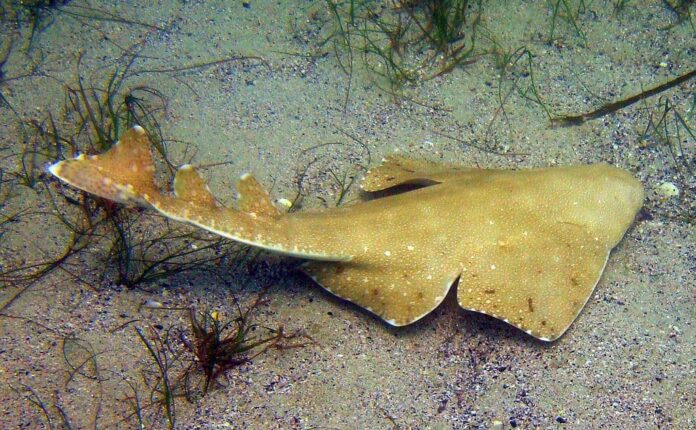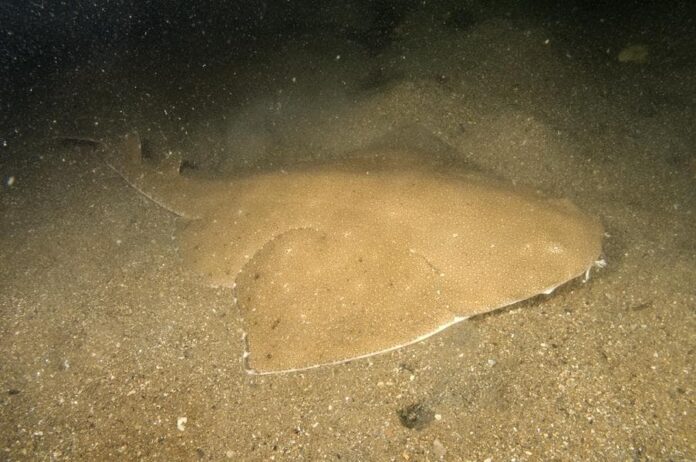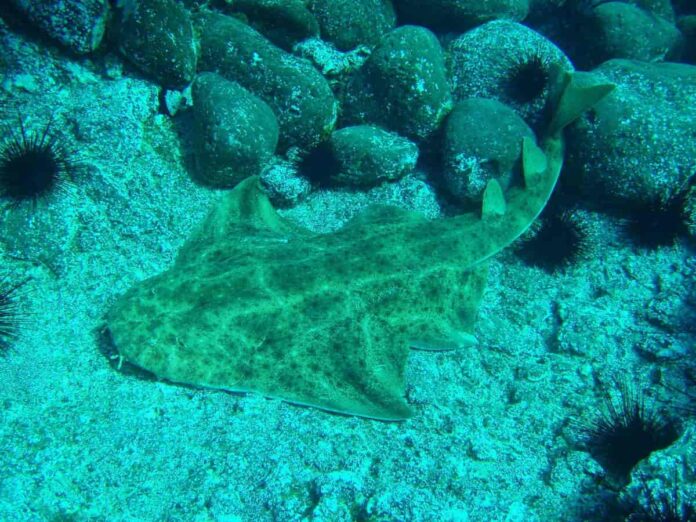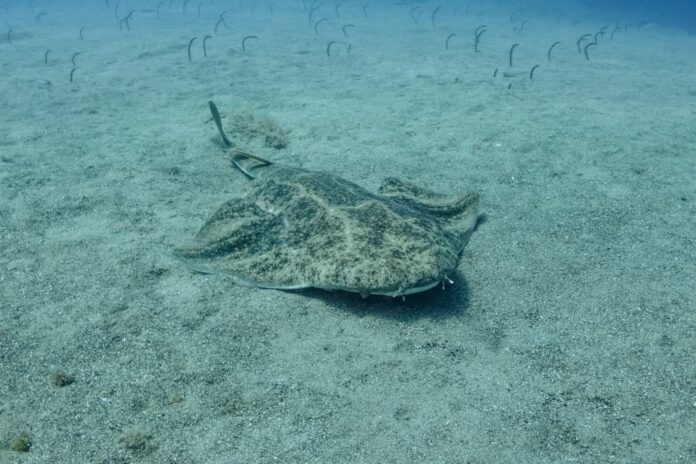An angel shark sounds like a kind and sweet creature, but it is a shark so you should think twice. It also goes by the name monkfish or sand devil, and both its appearance and habits are very interesting. Since there are quite several fascinating facts about them, let’s dive deeper and find out more below.
1Appearance

Growing up to only around 2.1 meters, angel sharks are among the smallest members of the shark family. At the same time, this shark species also has many unique features that make it different from the others. The flattened body makes it resemble rays but they can be distinguished from rays by their pectoral fins. An angel shark has a broad and flattened anterior part with a muscular posterior.
The sharks are grey to reddish or greenish-brown on the back with scattered small white spots and blackish dots and spots. Young individuals often have white reticulations and large dark blotches while adults are plainer. The coloration allows them to blend and camouflage on the seafloor as they wait to ambush. If we take a look at the face, its eyes and spiracles are dorsal. Along with that, it has extensible jaws that can rapidly snap upwards to capture prey with its long needle-like teeth.
2Behavior

Are angel sharks dangerous? Probably an angel, probably not. Angel sharks are not dangerous because they do not hunt humans. Technically, these sharks like to mind their own business and tend to steer clear of humans. Some species even remain perfectly still which allows divers to touch them, but some divers are not gentle. Sometimes divers grab them, and that is a different story. As you know, they have sharp and strong teeth. An angel shark is not afraid to inflict painful lacerations from its bites when provoked. Usually, it may bite a diver who approaches its head or grabs its tail.
3Feeding & Habitats

Normally, an angel shark buries itself in loose sediment and lies there to wait for prey. Sometimes it can stay there for days or even weeks until a desirable prey arrives before it attacks. As ambush predators, angel sharks are very quick to attack with their powerful jaws before swallowing prey whole. Speaking of patience. This shark species usually feeds on bony fish, crustaceans, small sharks, and various types of demersal animals and mollusks.
As for the habitats, angel sharks inhabit temperate and tropical marine environments where they live in shallow waters. Angel sharks are bottom dwellers of waters at depths from 3 to 100 meters deep off coasts. Common angel sharks are found in coastal and outer continental shelf sediment habitats in the Mediterranean Sea and Eastern Atlantic. Some species live on soft bottoms near kelp forests and rocky reeds while some live in brackish water and estuaries.
4Threats
One of the main threats to angel sharks is artisanal and commercial fisheries. Angel sharks are also highly sensitive to bottom trawling, and they are often caught in gillnets. Inhabiting in shallow waters is not good for them because they get caught in nets all the time. There are 23 angel shark species in the world, and some of them are not doing well. In some parts of the world, angel sharks are at a high risk of extinction. For angel sharks overall, they are considered Critically Endangered due to bycatch in trawl and setnet fisheries.
Related Post: Harmless Sharks You Can Swim Near




